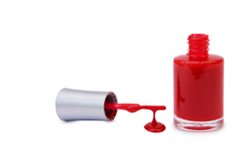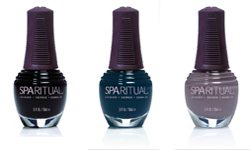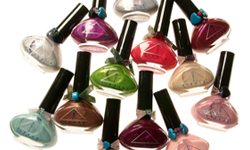 By: Rachel Lincoln Sarnoff, www.EcoStiletto.com and LuxEco Advocate
By: Rachel Lincoln Sarnoff, www.EcoStiletto.com and LuxEco Advocate
Can nail polish be “natural?” Let’s get real: No matter how many eco-friendly labels get slapped on the bottle, most of these products do contain chemicals—some of which can be dangerous to our health, and to the environment. Don’t let those labels fool you: Even so called “non-toxic” polishes should be disposed of as hazardous waste according to Earth911.com.
Remember, unless a beauty product is USDA Certified Organic, its manufacturer is not required to list ingredients on the label. Which is why we get “fragrance,” and it can mean 3,100 different chems. Literally.
But what about “organic?” The word is defined by the Random House Dictionary as “noting or pertaining to a class of chemical compounds that formerly comprised only those existing in or derived from plants or animals, but that now includes all other compounds of carbon.”
Basically, “organic” material comes from formerly living substances and is not necessarily good for you. Think motor oil. Organic, yes. USDA Certified Organic, no.
But we digress. Even an ecoista uses nail polish once in a while. Here’s what you need to know:
BYE, BYE BIG THREE: HELLO, RESIN
Most of the major polish brands are going “big three free,” meaning they’ve taken the most well known toxic ingredients—formaldehyde, toluene and dibutyl phthalate (DBP)—out of their formulas. But some still contain chemical solvents, typically acetate derivatives (that’s the stuff that makes it stinky). And some have gotten flak for “hidden” ingredients like formaldehyde resin, which may not be listed on labels.
 OPI is one of those brands: The industry’s biggest name has taken the toxic trifecta out of their best-selling polishes, but do include formaldehyde resin and acetate derivatives in their formulations. According to OPI chemist Paul Bryson, the difference between formaldehyde and formaldehyde resin can be confusing. “Formaldehyde is one of the raw materials that is used to make resin, but…when the resin is made, the formaldehyde molecule is torn apart: part of it becomes a water molecule and part of it is incorporated permanently into the resin molecule.” Not to get all chemical on your or anything, but Bryson also notes that formaldehyde’s highly reactive carbon-oxygen double bond also disappears in the process, meaning OPI’s big-three free polishes probably won’t blow up if you light them on fire. Bonus!
OPI is one of those brands: The industry’s biggest name has taken the toxic trifecta out of their best-selling polishes, but do include formaldehyde resin and acetate derivatives in their formulations. According to OPI chemist Paul Bryson, the difference between formaldehyde and formaldehyde resin can be confusing. “Formaldehyde is one of the raw materials that is used to make resin, but…when the resin is made, the formaldehyde molecule is torn apart: part of it becomes a water molecule and part of it is incorporated permanently into the resin molecule.” Not to get all chemical on your or anything, but Bryson also notes that formaldehyde’s highly reactive carbon-oxygen double bond also disappears in the process, meaning OPI’s big-three free polishes probably won’t blow up if you light them on fire. Bonus!A TRACE OF ACETATE
 Orly revolutionized nails when founder Jeff Pink introduced the French manicure in 1975; daughter-in-law Shel Pink was one of the first—in 2004—to create a vegan polish that eliminated DBP, toluene, formaldehyde (and formaldehyde resin), and phthalate derivatives, synthetic dyes, parabens, and petrochemicals. Although the formulations do include butyl and ethel acetate, the color selection and hipness factor of SpaRitual polishes can’t be beat.
Orly revolutionized nails when founder Jeff Pink introduced the French manicure in 1975; daughter-in-law Shel Pink was one of the first—in 2004—to create a vegan polish that eliminated DBP, toluene, formaldehyde (and formaldehyde resin), and phthalate derivatives, synthetic dyes, parabens, and petrochemicals. Although the formulations do include butyl and ethel acetate, the color selection and hipness factor of SpaRitual polishes can’t be beat. Paraben-free Firozé claims to be the first polish company to have taken out DBP (in 1999). Their polishes do include butyl and ethel acetate but no toluene, formaldehyde or formaldehyde resin. Firozé also fortifies their polishes with herbs, vitamins, essentials oils and soy and rice polymers; their acetone-free polish remover is made with corn. And they never, ever test on animals.
Paraben-free Firozé claims to be the first polish company to have taken out DBP (in 1999). Their polishes do include butyl and ethel acetate but no toluene, formaldehyde or formaldehyde resin. Firozé also fortifies their polishes with herbs, vitamins, essentials oils and soy and rice polymers; their acetone-free polish remover is made with corn. And they never, ever test on animals.What’s the most non-toxic nail polish on the market? Find out more on EcoStiletto’s beauty page!















